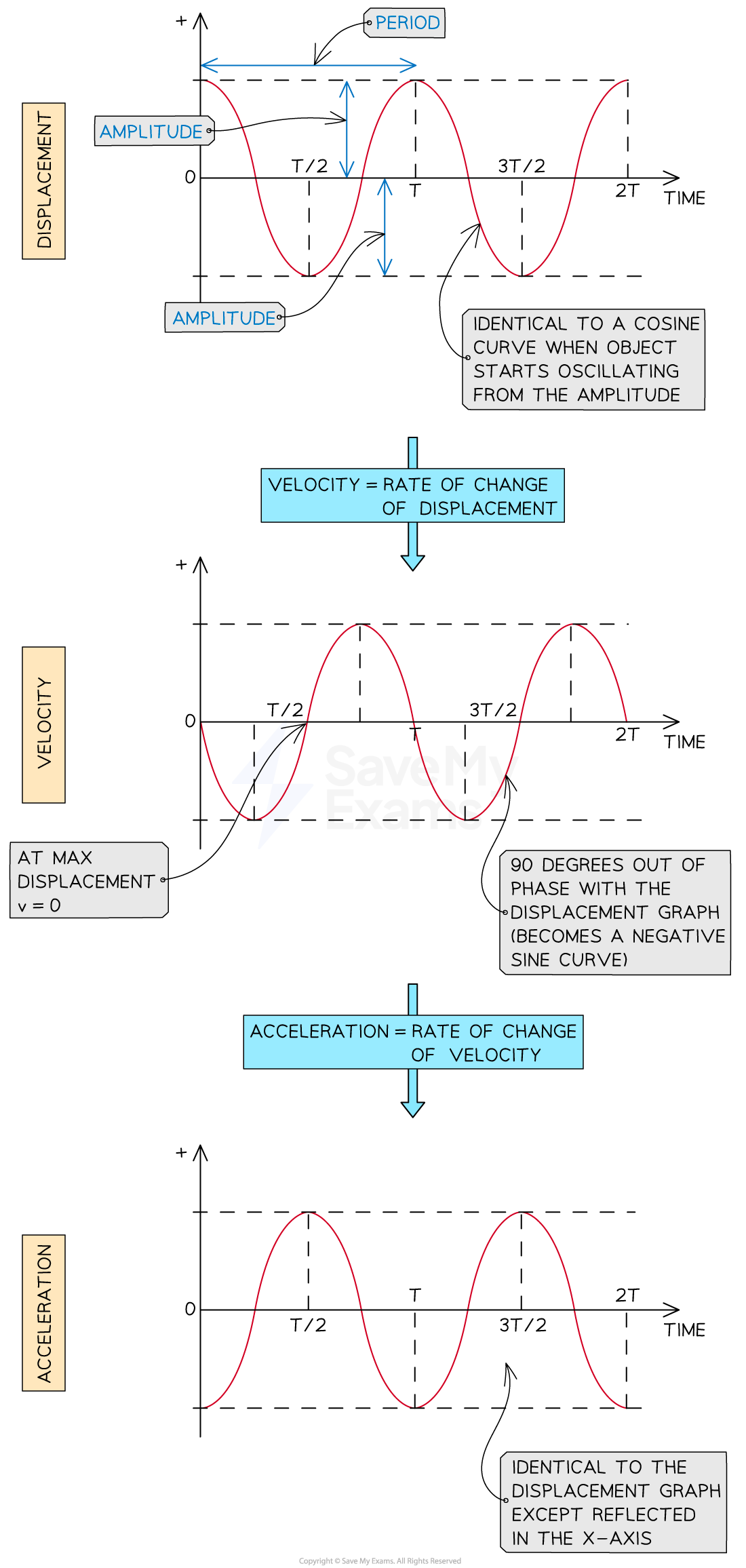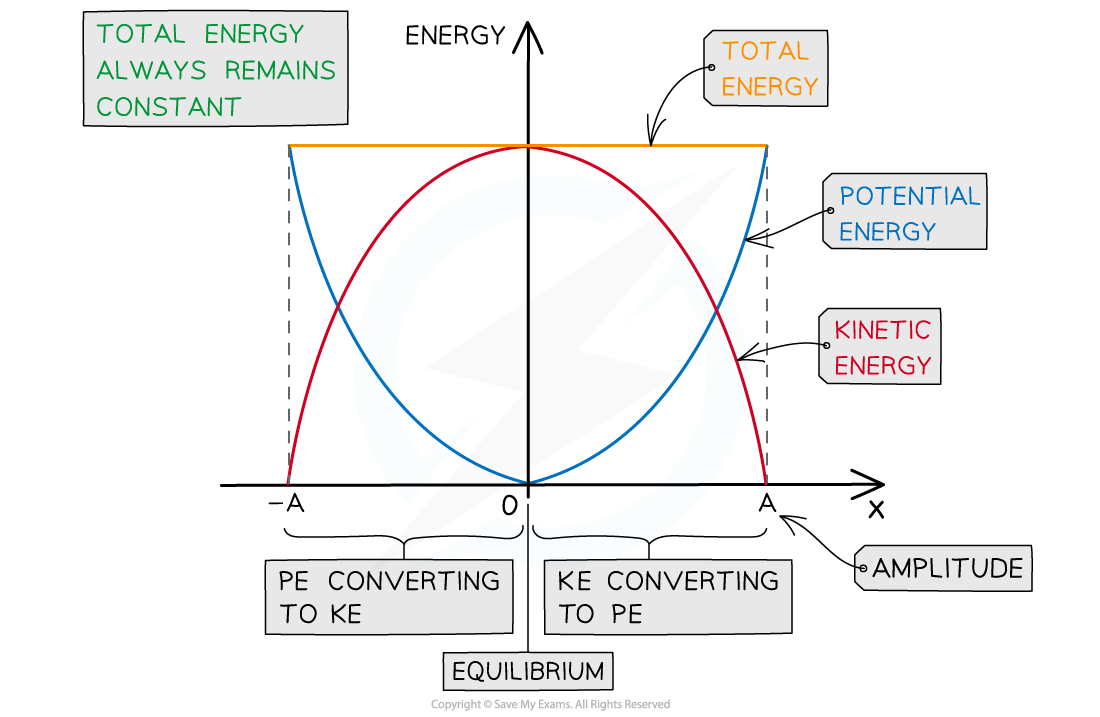C1 Simple Harmonic Motion
1/15
Earn XP
Description and Tags
SHM
Name | Mastery | Learn | Test | Matching | Spaced |
|---|
No study sessions yet.
16 Terms
C1.1 UCM
UCM = object going around in a circle at constant speed. Usually horizontal circle.
Although speed is constant, still accelerating; centripetal acceleration due to centripetal force, eg. tension in a string.
C1.2 SHM
Repetitive movement back and forth through equilibrium. Uniform time period:periodic.
Restoring force directed towards equilibrium, directly prop to distance from it.
C1.3 Oscillation
Repetitive variation with time t of displacement x of object about equilibrium (x=0)
Eg. Pendulum oscillates between A and B, give x-t graph of a sin-wave.
C1.4 Equilibrium position
x=0, no resultsnt force acting on object. Fixed central point that object oscillates around
C1.5 Displacement (from equil)
Horizontal or vertical distance of a point on the wave from its equilibrium position. Vector, meters, + or -
C1.6 Period (T)
Time period → time interval for 1 complete oscillation measured in s. Constant period: isochronous
C1.7 Amplitude (xo)
xo = max value of x on either side of equilibrium position. in meters.
C1.8 Frequency (f)
f = nr of oscillations per second (Hertz;Hz = s-1)
f = 1/T
C1.9 Angular Frequency (ω)
ω = angular frequency = rate of change of angular displacement over time: rad s-1
ω = 2π/T = 2πf
C1.10 Condition SHM
a ∝ -x
Restoring F(or a) is opposite and directly proportional to the displacement form the equilibrium position
C1.11 Graph SHM
See, period, amplitude, min/max velocities

C1.12 Simple pendulum and mass-spring
Side to side fixed point, consider long ass string so its mostly horizontal motion, not vertical. T = 2π √(l/g)
Small angle approximation → sinθ = θ
Mass spring; vertically up horizontally down; magnitude of amplitude dependent on spring. FH = -kx. T = 2π √(m/k)
C1.13 Equations of a
a = -ω2x
C1.14 Energy change in SHM
Interplay between Ek and Ep (gravitational, elastic)
Total energy doesnt change. Ep + Ek = constant Ep
½ mω2x2 = EP
½ mω2xo2 = ET
½ mω2 (xo2 - x2) = ET

C1.15 Equations SHM
x = xo sin ωt
v = ωxo cos ωt = - ωxo sin ωt
a = -ω2xo sin ωt
v = ± ω √xo2 - x2
C1.16 Phase difference
In phase; same point in wave cycle. Difference between points angles stuff yk… is phase angle. If no starts from equilibrium, out of phase by Φ. Diff in angular displacement compared to oscillator which has x=0 and t=0. Between 0 and 2π.
Graphically:
x = xo sin (ωt+Φ) - also for the others, just add a phi
v = ωxo cos (ωt+Φ)
a = -ω2xo sin (ωt+Φ)
Φ = phase difference = how far the point move TO THE LEFT
Starting position: “time from the equilibrium”